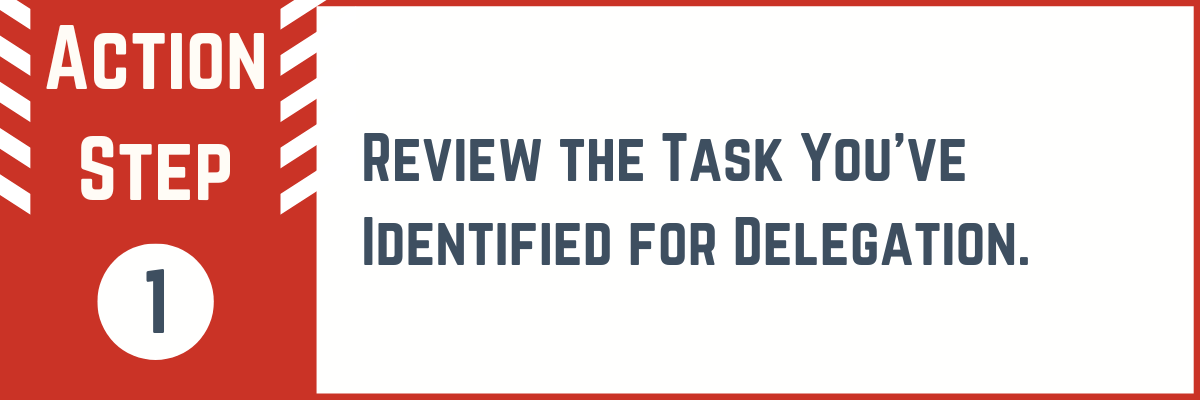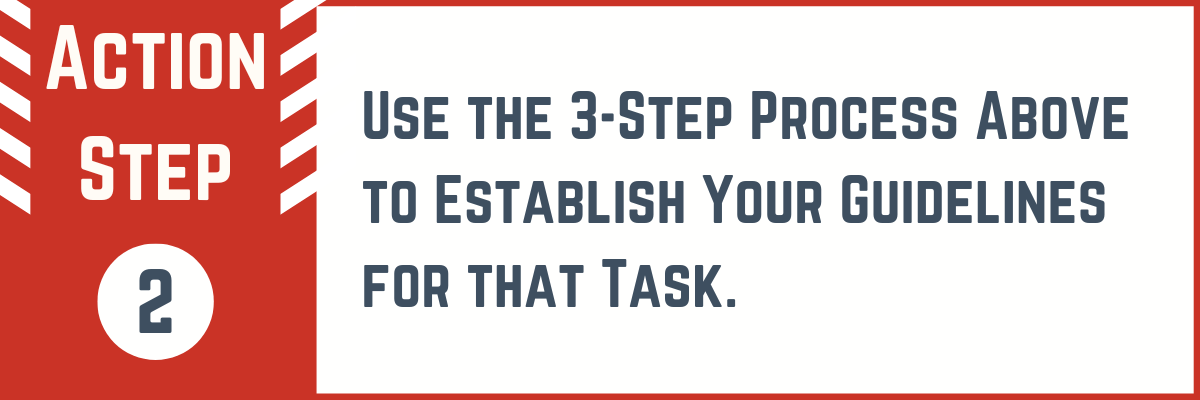How to Delegate with Confidence Series (Part 3 of 7)
You’ve bought into the idea that you need to delegate to be more effective. You’ve identified an initial task to delegate. Now you’re looking to get started!
In 7 Habits of Highly Effective People, Stephen Covey outlines the DR GRAC Delegation Process that has proven to be both solid and practical to use. Employed all over the world, the successful methodology helps slow down and clarify delegating so that Win-Win situations are established as the work gets done.
In this installment of our How to Delegate with Confidence Series, we’ll discuss the second step of the framework: the Guidelines (G). Hopefully, in Part 1 of the Series, you identified an item to start with and you established your Desired Results (DR) Typically, forcing yourself to think more deeply and more clearly about the item you’re going to delegate is an important thought exercise to establish the desired outcome. Most tasks you’ll want to delegate are ones you’ve been doing yourself for a long time. That’s positive, as it means you’ll benefit from having it done without it taking your time, but there’s also a downside. You likely do the task so habitually that you haven’t thought much about the details of how and why you’re doing it. You just get it done! One of the best results of this delegation process is the renewed clarity about the task due to the need to explain it to someone else.
What Rules Need to be Followed While Completing the Task?
Think about the item you want to delegate. In the first step, you specified the Desired Results (DR) that you are seeking. Next, you’ll need to establish the Guidelines (G) by which the task is to be completed. Think of it as the rules that need to be followed when doing the task to ensure proper completion.
One trap that you need to avoid is over-specifying the wat a task is to be done. It’s very easy to want whoever is taking over this task to do it exactly the same way that you’ve done it in the past. A big part of the DR GRAC Delegation Process is to only list Guidelines that are absolutely necessary, rather than just “how you used to do it.” Providing the person receiving the delegation as much freedom as possible to determine their own method, is an important aspect of them taking over “ownership” of the delegated item. It will also help prevent you from micromanaging the task based on your particular preferences for the method of completion.
Guidelines (G) – Step 1. Initial Brainstorm
Take a few minutes and list the Guidelines for the task as completely as possible. Quick notes or a bulleted list are fine at this point, just get as much information down as possible. What are the rules and method you use to complete the task? Just get everything down as quickly as you can.
Here are a few questions to help you create this list:
- What is always a part of the action to complete the task?
- What do you make sure is never part of completing the task?
- Are there any potentially dangerous aspects of the task that either must be included or must be avoided to complete the task safely?
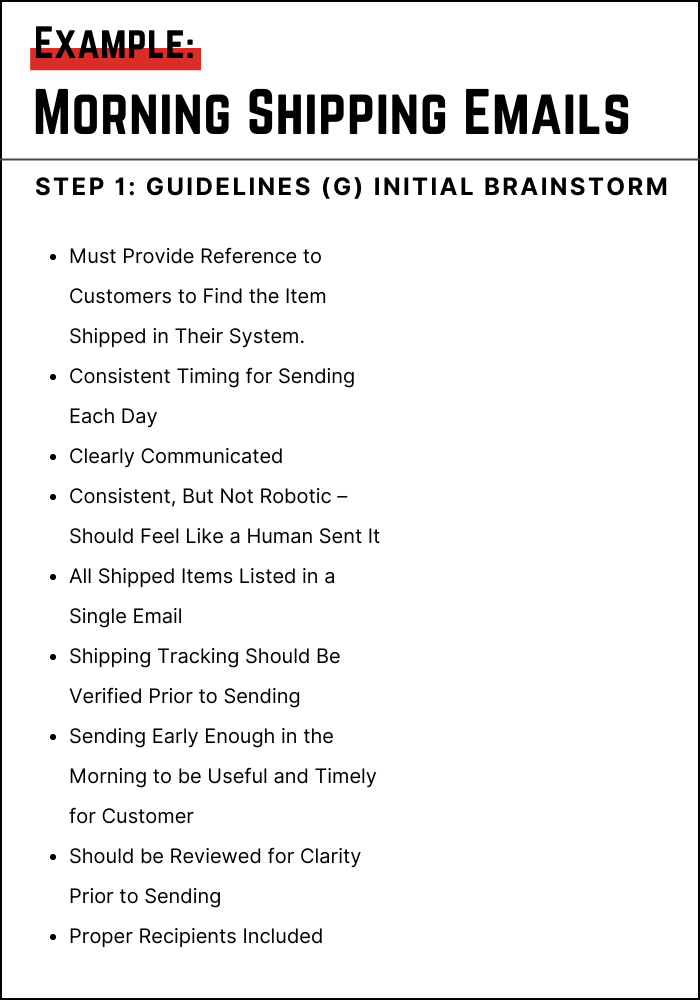
Guidelines (G) – Step 2. Question Each One – Guideline or Micromanagement?
Next, take the list you created and review it to determine if each item on the list is truly a Guideline, or if it’s a method-related micromanagement restriction. It’s easy to provide more Guidelines than necessary. The further you restrict the person receiving the delegation, the less empowering the process becomes. As a part of the delegation process, you’ll show them your methods, but limiting the Guidelines to only the absolutely necessary rules will provide them the freedom to use their own ingenuity to accomplish the task.
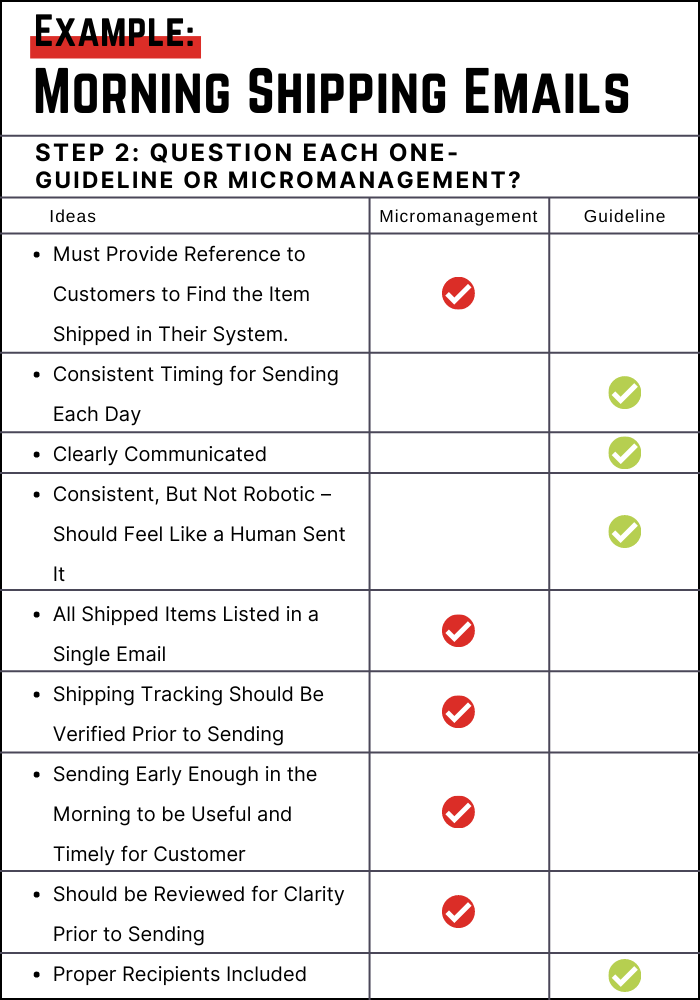
Guidelines (G) – Step 3. Establish Guidelines to Cover Micromanagement Items and Finalize the List for Review
After identifying which items on the list went past being a Guideline and got into Micromanagement, you can consider alternatives. Is there a bigger picture rule that covers the intent of the Micromanagement item? Probably there is and using that bigger picture will improve the delegation.
Such an organizational process will help clarify your thinking. This is especially important because you’ll want to provide as much freedom as possible to the person you’re delegating to, so they can do what is easiest and best for them. Their method could be very different from yours, but as long as they stay within the Guidelines and achieve the Desired Results, the task will be successful.
Going through this process, you’ll discover that separating Guidelines from your specific method of completing the task is more complicated than you thought. Although it may require more thought than you’d like, know that the hard work of creating clear Guidelines will pay off in the ownership passed down in your delegation.
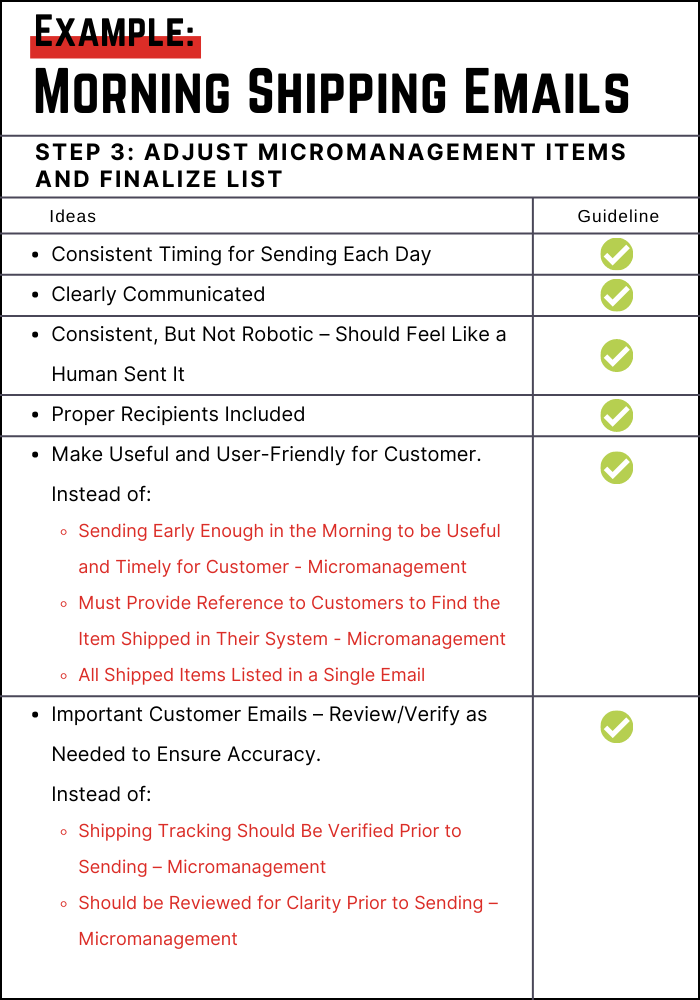
With the Guidelines clearly established and reviewed to ensure they haven’t slipped into Micromanagement, you’ve set the stage to provide as much freedom of action as possible to complete the task. This will empower the person receiving the delegation. Even making a very minor change to your method can feel very significant to them.
Guidelines (G) – Final Thoughts
Clearly establishing the Guidelines for completion of the task is the second step in Delegating with Confidence. Your ability to provide as much freedom of method as possible will be appreciated by the person you are delegating the task to and will increase their “ownership” of the task.
Here are your two Action Steps from this section:
